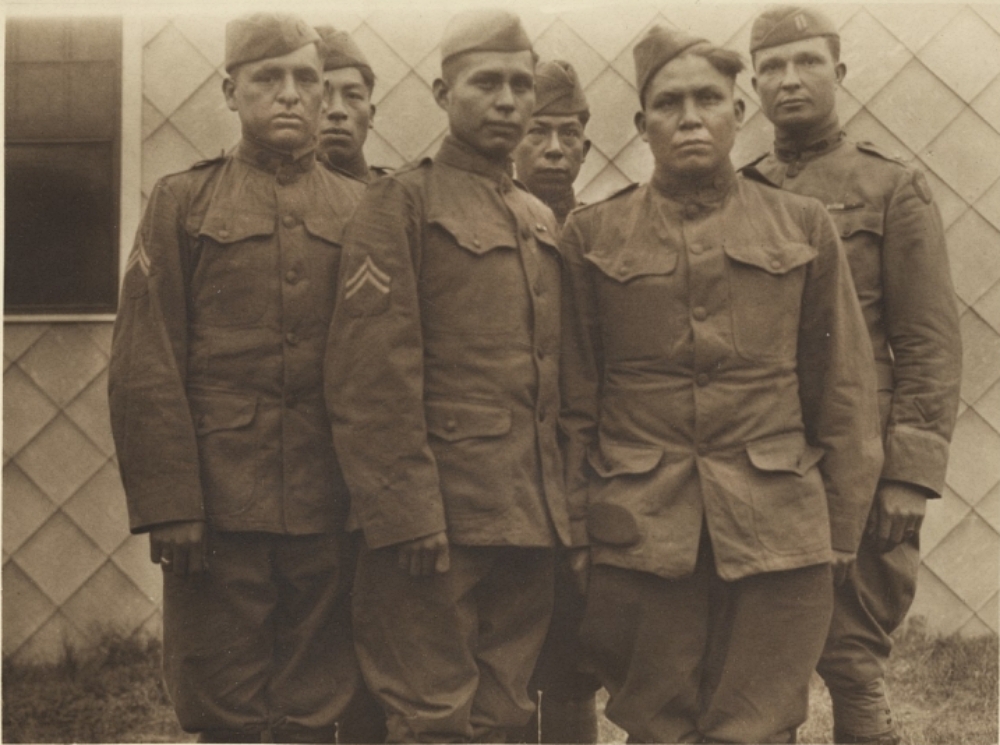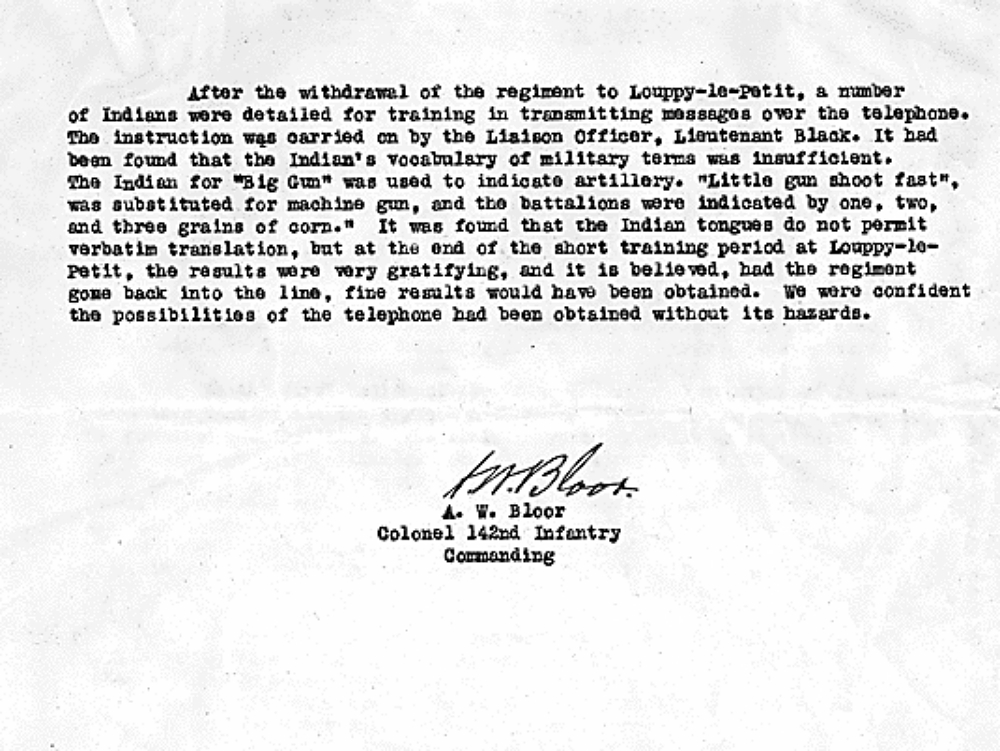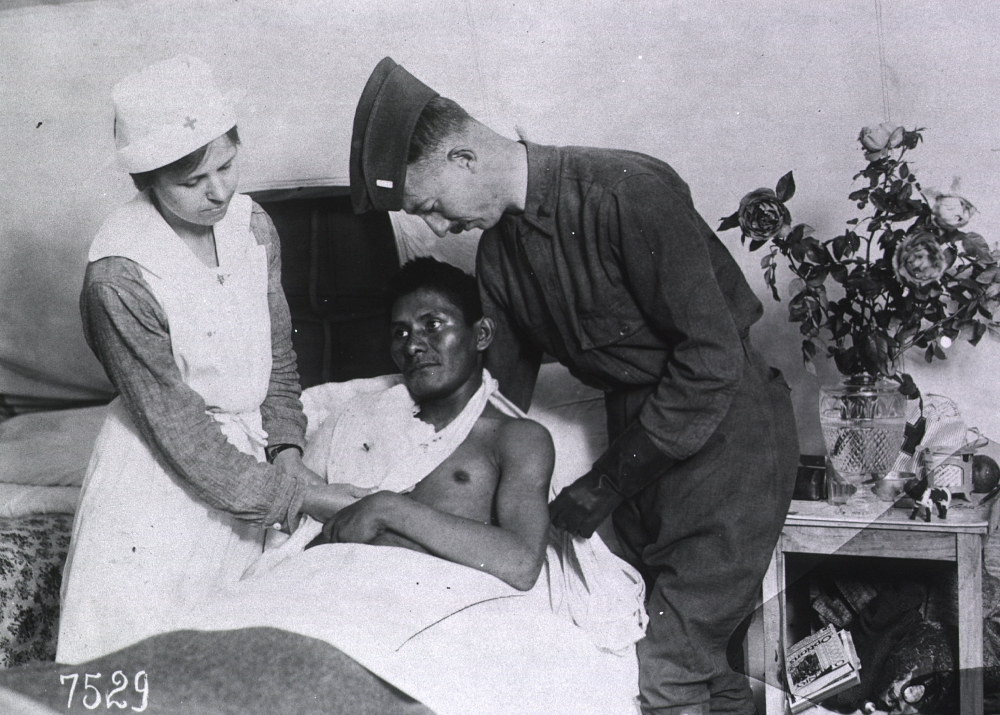Many people are familiar with the Navajo code talkers who helped ensure that the Allies won World War II. But, the code talkers of World War I are not quite as famous. These Native Americans used their indigenous language to ensure messages would be encoded in a way that Europeans had zero access to. And, since it was an ancient language it was many times harder to crack than an invented code. The Germans, in turn, were so confused that they thought the US forces had invented a machine to talk underwater and then decode it.

Unlike the code talkers of World War II, these men were Choctaw and many of them came from Texas and Oklahoma. 19 Choctaw men have been identified as code talkers and during the last stages of the war they were placed on the front lines in order to quickly convey messages in the heat of battle.
It began when some of these men were overheard by a commanding officer speaking in their native language and it was only after that incident that it was suggested they use Choctaw as a way to “encode” messages. The ironic thing is that during this era many Indian schools were set up across the US where speaking in native languages and following native customs was harshly punished. Under this system children were forcibly sent to boarding schools where they were to be assimilated.
Happy Veterans Day! Yakoke to all who are serving or have served our country and fought for our freedom. The Choctaw Code Talkers of WWI were instrumental in ending war. Learn more at https://t.co/A2UtO8bvMF#VeteransDay pic.twitter.com/tFNLgkGkcu
— Choctaw Cultural Center (@Choctaw_CC) November 11, 2021
The motto that governed these schools at the time was “kill the Indian to save the man”, a sentiment popularized by Richard H. Pratt, founder of the Carlisle Indian Industrial School. This was the first institution of its kind, but these types of schools would impact Native American populations up until the present time. Generations of Native American children lost their culture under this program.
However undervalued and underserved Native Americans had been under the laws of the US, (Native Americans were not granted citizenship until 1924, with some states witholding their rights to vote until the 1950s), 12,000 Native Americans joined up during WWI to patriotically fight for their country anyways.

Choctaw soldiers were used in the preparations for the attack at Forest Farm, one of the final Allied victories of the war that turned the tide. Colonel Alfred Bloor of the 142nd Infantry (a Texas and Oklahoma National Guard unit) wrote of the events in 1919 saying that the Germans were masters of wire tapping and listening in.
Bloor noted that one of the advantages of the Choctaw talkers was not only that the Germans, who were inevitably hearing it all, would have no knowledge of the language. The other main advantage was that unlike devised codes that took lots of time to draft, Choctaw talkers needed very little preparation time since they were simply speaking their first language.
The only problem with these telephone and radio transmissions was that there often were no direct translations in Choctaw for equipment and military terms. Thus the phrase for machine gun was a “little gun that shoots fast” and “big gun” was used to mean artillery. Minor coding of the terms made this easier but also created a sort of “code within a code” that the Germans found utterly baffling. They had no idea what to make of the messages.

Despite being largely unacknowledged for decades, the Choctaw code talkers have been awarded many honors in more recent years. They were given the Chevalier de l’Ordre National du Merite (Knight of the National Order of Merit) by the French government in 1986 and in 2007 were honored by the State of Texas with the Medal of Valor. President George W. Bush signed into law the The Code Talkers Recognition Act of 2008, which awarded a Congressional Gold Medal to each tribe and a silver medal to the families of each of the code talkers of both World wars.
The Choctaw code talkers were noted for their swaying one of the final battles of the war, but there were soldiers from other tribes whose languages were also used as code during the war- including Cherokee, Cheyenne, Comanche, Osage, and Yankton Sioux.
SKM: below-content placeholderWhizzco for DOT

